|
|
|
![]() back to "The Grand Tour" index
back to "The Grand Tour" index
Neville Malkin's "Grand Tour" of the Potteries
buildings of
Cobridge
![]()
![]()
![]()
next: Etruria Hall
previous: Christ
Church, Cobridge
contents: index of buildings outlying the town centres
|
No 55 - Little Sisters of the Poor, Cobridge "In 1822 Bridgettine nuns from Lisbon opened a convent at Cobridge Cottage situated off Elder Road between the present Grange Street and Mawdesley Street. They moved to Stone c. 1828. The Little Sisters of the Poor, after two years at Druid's Hall, Albion Street, Hanley, moved in 1892 to Cobridge House in Cobridge Road, the home of the Hales family in the 18th and 19th centuries. The nuns bought the house in 1899 and replaced it by the present [1963] St. Augustine's Home, built in 1902–3 and extended in 1911 and later. There is now accommodation for about 100 old people at the home. At first the Cobridge priest served a very wide area covering Leek, Crewe, Market Drayton, Ashley, and Newcastle as well as the Potteries with its rapidly growing population. The gradual establishment of new missions reduced his responsibilities, but in 1827 he could still describe his mission as 'one of the most extensive and in the greatest want . . . about 1,000 souls dispersed in 6 towns and above 20 villages' " From: A History of the County of Stafford: Volume 8 (1963) |
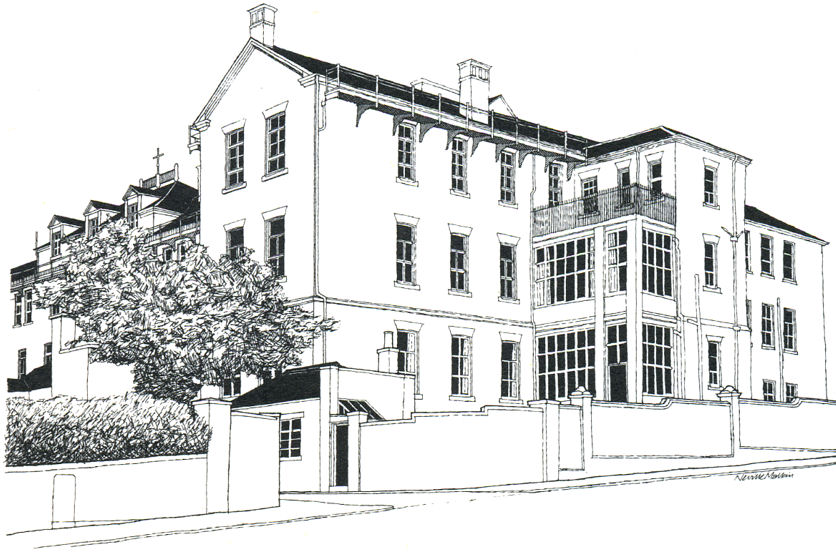
Little Sisters of the Poor,
Cobridge
pen drawing by Neville Malkin -
July 1975
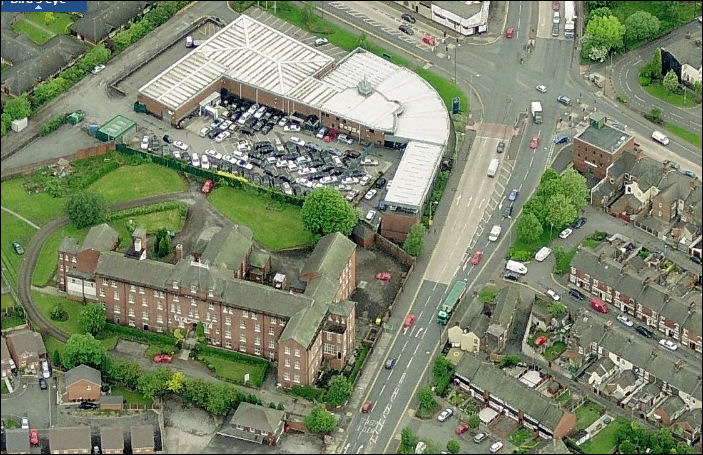
Top of Cobridge Road
- at the cross roads leading over to Elder Road
- running left to right at the cross roads is Waterloo Road -
- picture Jan 2008 -
| To the right is St.
Augustine's Care Home which used to be the 'Little Sisters of the Poor'
convent, it was approved to be used as a nursing home in January 1994 and
from June 1999 used for a number of years as a hostel for refugees and
asylum seekers.
It was demolished in 2008/9 and replaced with a 33 bedroom, purpose built care home. |
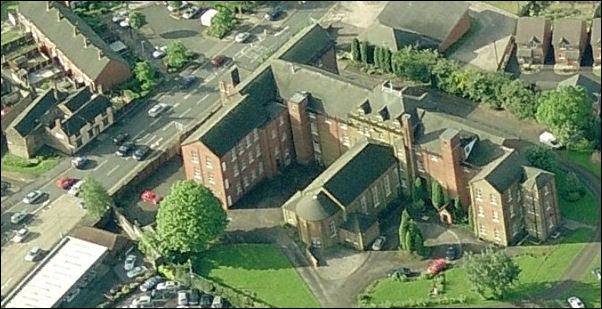
other side of
the St. Augustine's care home
on the opposite side of Cobridge Road can be seen the former Black
Boy Inn
- picture Jan 2008 -
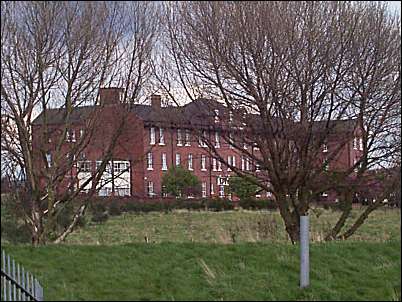
St. Augustine's nursing
home
Photo - April 2000
|
"The
origins of this large brick building at Cobridge, dedicated to St.
Augustine, and occupied by the hardworking Little Sisters of the Poor,
go back to the mid-19th century, a time that saw the beginning of
continual development of Catholic life in England. Hanley, a fairly typical town in the pattern of events, opened its first Catholic church in 1860, following a short period when Mass had been celebrated in a local carriage works. In 1861, a school was opened in the church. With growing attendances a second church was planned, but the poverty of the mission delayed its building until 1889-91, the first church continuing in occasional use until its sale in 1940. The religious order was particularly concerned with education and the care of the aged, and during the late 1880s a convent was opened by the Little Sisters at the Druids' Hall, Albion Street. In 1891, at the request of Monsignor Hinsley, who was later to become Cardinal and head of the Catholic Church in England, the Little Sisters moved to a more suitable house in Cobridge. This stood on land that had, at one time, been farmed by Cistercian monks, not far from where the ancient Grange House Farm used to be. The Sisters rebuilt the house in 1902-3, extended it in 1911, and have since made many more alterations. The Mother Superior and 17 dedicated Sisters care for about 100 aged and infirm people of all denominations in a building that has homely small wards, lounges, and dining rooms. There is also a large chapel with a balcony where, among dignified and peaceful surroundings, the residents and public can celebrate Mass."
|
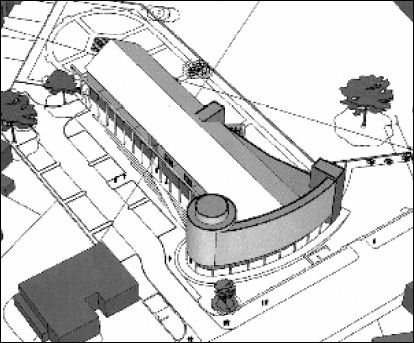
artists impression of the new
nursing home
- fronting onto Cobridge Road, the
round 'turret' part is a gym and offices -
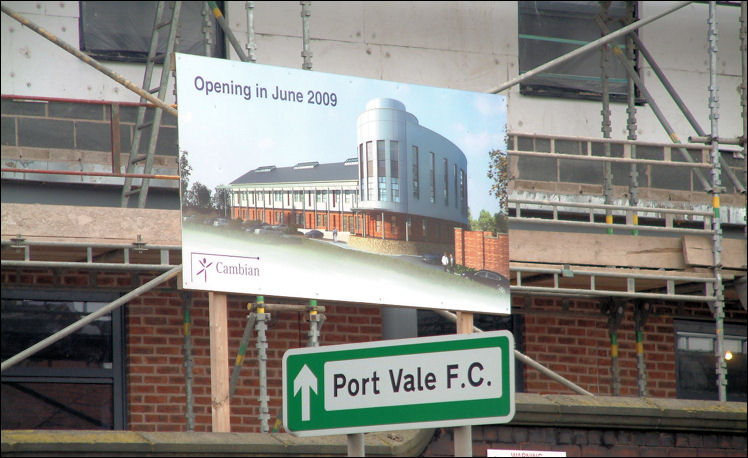
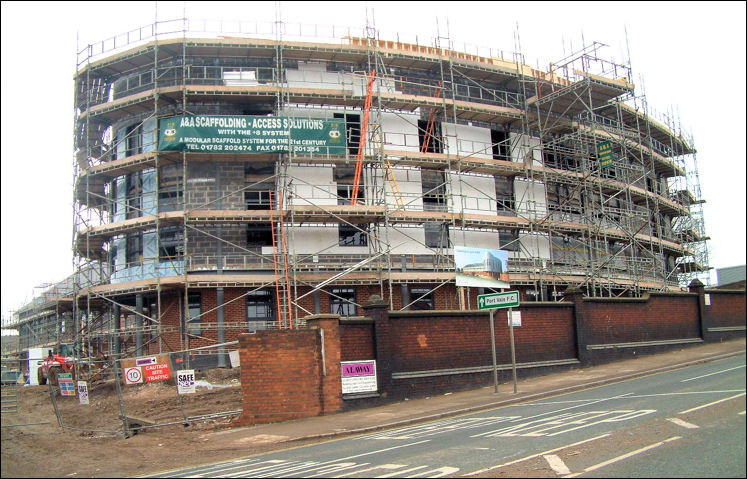
construction of
the new nursing home
photos: Feb 2009
|
Hospital aims to
build bridges with community "A LANDMARK £5 million
building has changed the skyline of a deprived Stoke-on-Trent community
and will transform the care of scores of psychiatric patients in the city
and beyond.
Bosses at the first
privately-run complex of its type in North Staffordshire say it fills a
gap in local NHS provision for those with a mental illness. The unit, with
its 32 en suite bedrooms, has more of the feel of a plush hotel than a
psychiatric setting. Yet its patients are all funded by the NHS.
Director of operations Noel Tracey said: "Although we are a private hospital, we work hand-in-hand with the local NHS, and all our patients are paid for by primary care trusts.
|
![]()
![]()
![]()
next: Etruria Hall
previous: Christ
Church, Cobridge
contents: index of buildings outlying the town centres
back to "The Grand Tour" index